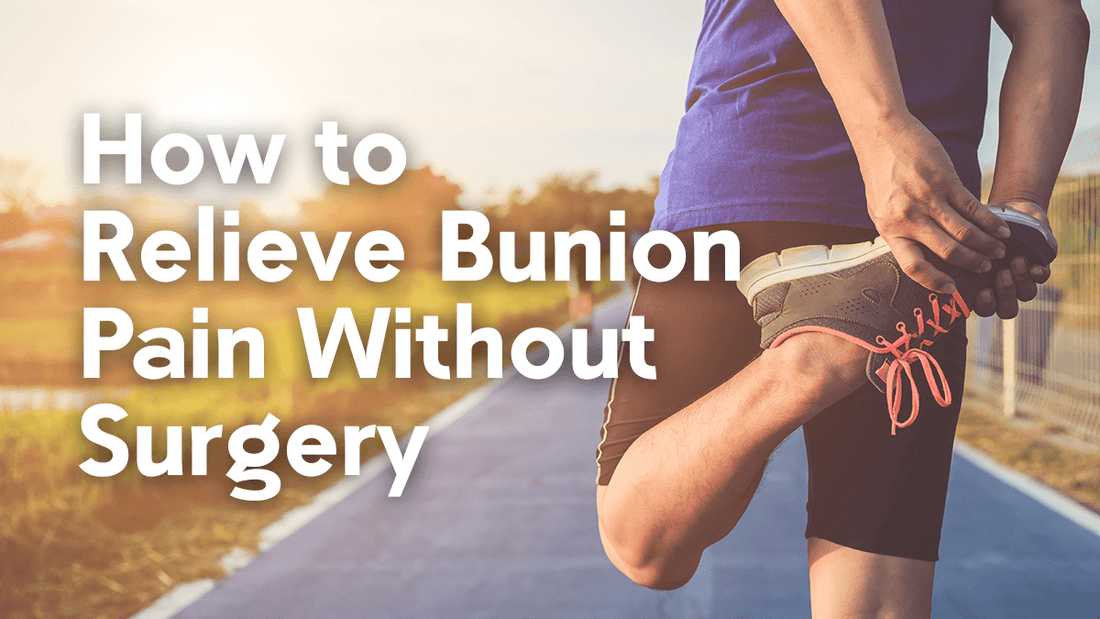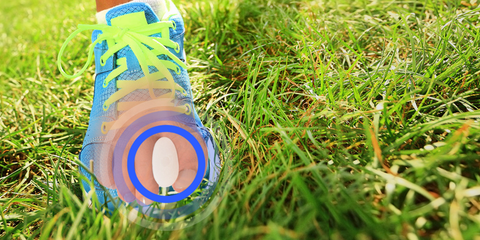How to Relieve Bunion Pain (without Surgery)
- Bunions
- Foot Care
- Pain Relief

Welcome to the third of our four part series on how to avoid making your bunions worse! In the first two parts, we explored the importance of wearing the correct shoes, and examined different types of walking shoes to soothe tired feet. In this part, we’re going to explore some options bunion sufferers can take if they want to avoid surgery.
Bunion surgery can be costly, and require time off from work. To be sure, sometimes surgery is the only option, but there are many steps those with bunions can take before resorting to bunion surgery. In addition to wearing appropriate shoes that accommodate a bunion, there are MANY other treatment options available!
A corticosteroid injection is one option your podiatrist may present in order to provide relief from bunion pain. The injection can be given within the joint of the great toe or around the bony prominence, depending on the person’s area of pain. This is also a treatment option for bunionette pain. It’s important to note that most podiatrists limit the number of corticosteroid injections they will give a patient in a year and not everyone is the best candidate for a corticosteroid injection. Your podiatrist will let you know if a corticosteroid injection is right for you.

Bunion pads are another treatment option to consider. If you mainly have “bump pain” when wearing closed toe shoes, in addition to wearing a wider shoe, a gel-like bunion pad could reduce or even resolve your pain! Patients that have skin irritation due to rubbing of the first and second toes together due to a bunion deformity usually benefit from a toe separator. These toe separators also work well for patients with a bunionette due to the rubbing of the fifth toe against the fourth toe. Place the separator between the four and fifth toes and there will no longer be any rubbing. Sometimes these types of problems can be resolved with something as simple (and affordable) as a little toe separator!

Custom orthotics are a great option to consider for bunion pain and to prevent the bunion from getting larger. In a person with a bunion caused by a hypermobile midfoot, a custom orthotic will provide the ideal arch support to prevent the bunion from worsening over time.
Some bunions are actually caused by arthritis within the big toe joint. In this situation, you would see the “bump” on the top of the big toe joint instead of on the side of the joint. This is due to the jamming of the joint when walking. Patients with a bunion caused by hallux rigidus (significant arthritis within the big toe joint) often find bunion pain relief with custom orthotics. A rigid shell material is incorporated into the custom orthotic that extends under the great toe joint to the tip of the great toe. The goal is to eliminate motion at the great toe joint, therefore eliminating pain and preventing the bump from getting bigger. A corticosteroid injection is also an option for many patients that have arthritis within the big toe joint. Just ask your podiatrist if a corticosteroid injection is right for you!
The best part about custom orthotics is that they are custom to YOUR foot. However, they can be costly at times. If custom orthotics just aren't something you can afford right now, there are many prefabricated orthotics that can provide good arch support and therefore prevent your bunion from getting bigger. Most podiatrists do carry prefabricated orthotics in the office and they do tend to be of a better quality than what you can find at your local pharmacy.
As you can see, there are many nonsurgical options available to relieve bunion pressure and pain. In the final part of our series, we’ll review everything we’ve covered.
Author: Dr. Megan Ziemer, DPM
Wondering if you have a bunion? Check out our bunion quiz for more information and relief tips!
Continue Reading
View All
Our New Copper Infused Elbow Sleeve
We are so excited to introduce our new Copper Elbow Sleeve. Watch this short video to learn why this is the best cho...
- Joint Pain
- Pain Relief
31 Reasons to Make Compression Gloves Your Soulmate
If you have hand pain, your soulmate might be a pair of compression gloves. Support, compression, copper compression ...
- Arthritis
- Carpal Tunnel
- Hand Pain
- Pain Relief
How to Fight Carpal Tunnel (and Win!)
Carpal Tunnel Syndrome is a painful condition that causes numbness, weakness, and pain in the hands and wrists. There...
- Carpal Tunnel
- Hand Pain
- Pain Relief